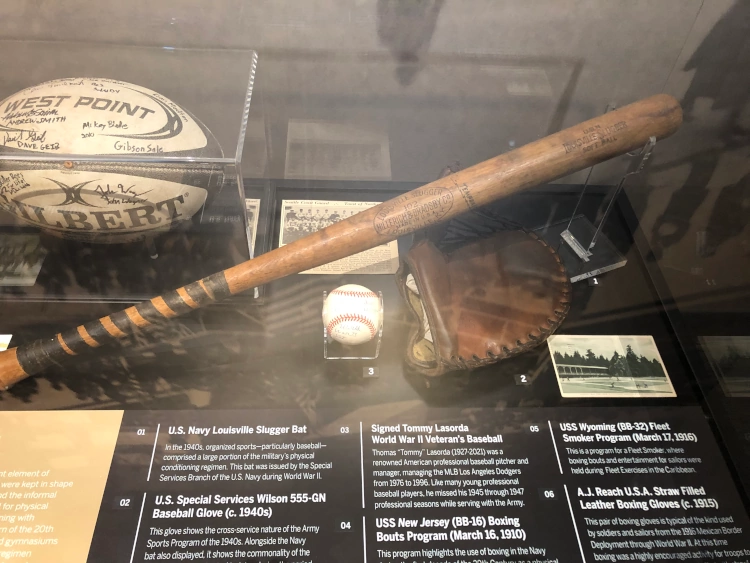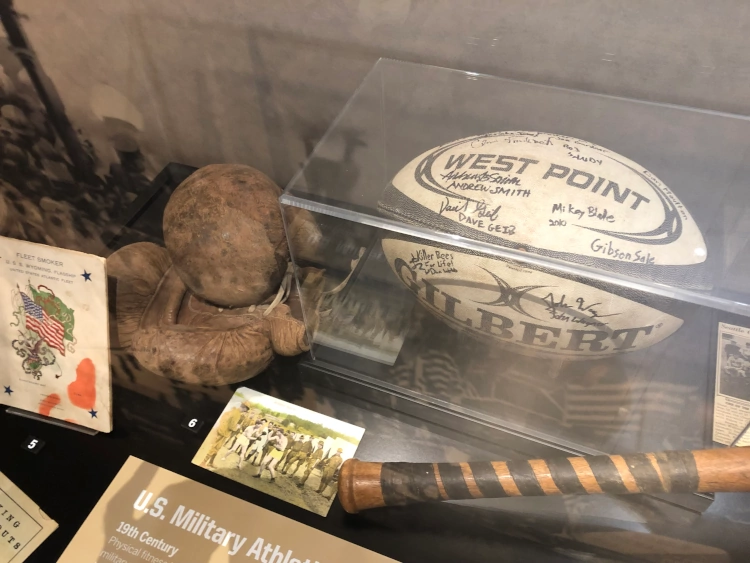
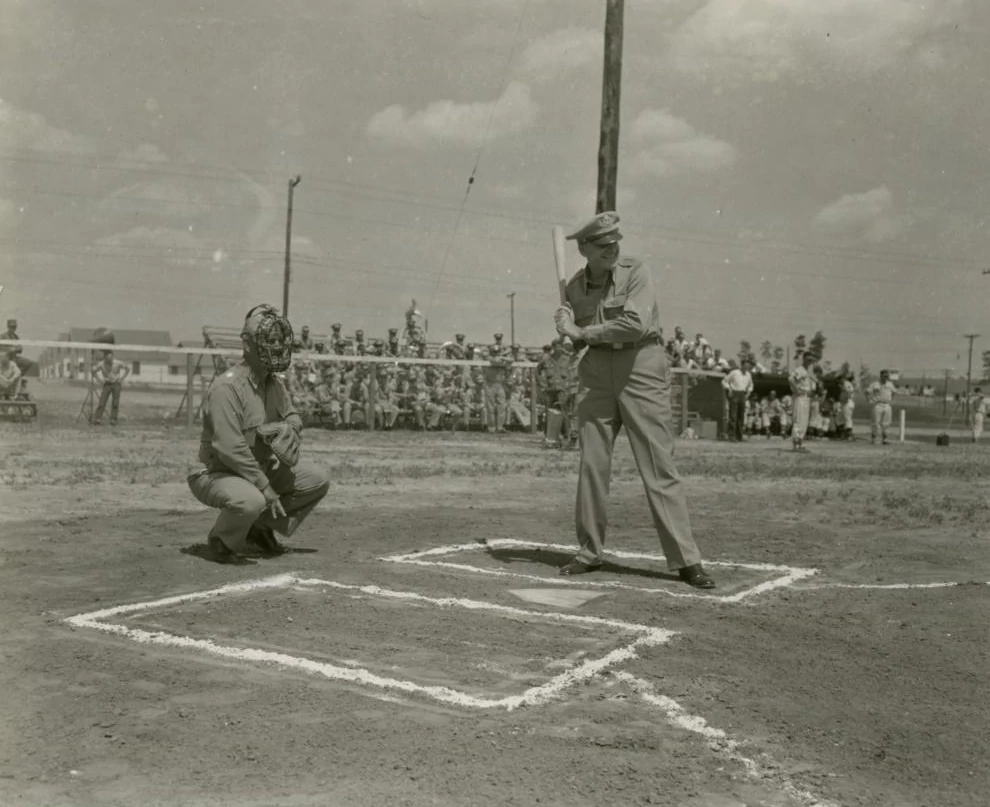
World War II Baseball played in military uniform
By Douglas R. Cubbison, Curator, National Museum of Military Vehicles
Athletics in Military Training
Recognizing the need for a more dynamic exhibit in the General George S. Patton, Jr. Gallery this past summer, we asked our first professional Museum intern, Mr. Thaddeus Booth from the Cooperstown Program in Graduate Studies, to design a fascinating exhibit on the role of athletics in military training.
From the founding of the nation's Armed Forces, physical fitness was considered. General Henry Knox, the first Secretary of War, proposed, among other things, "No amusements should be admitted in camp but those which correspond with war: the swimming of men and horses, running, wrestling, and such other exercises as should render the body flexible and vigorous."
But even throughout the Spanish American War there was no required physical training. Troops were kept in shape by marches, hard manual labor known as "fatigue duty" and the informal recreational playing of sports like baseball and its predecessors. The first manual for physical training for the Army did not come out until 1887, written by Herman Koehler, Master of the Sword at West Point.
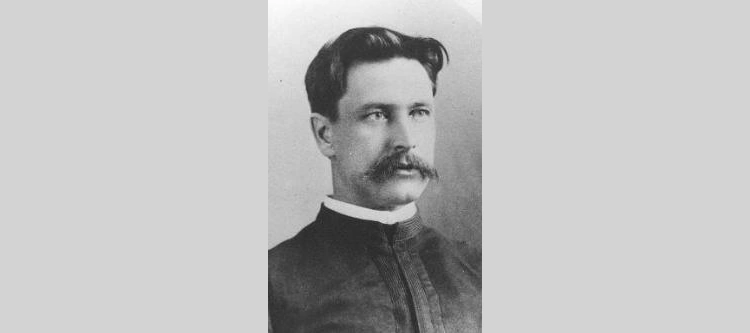
Beginning with enhanced professionalism of the U.S. Armed Forces at the turn of the 20th Century, U.S. Military physical training began to slowly become formalized, and gymnasiums began to be constructed as a component of military installations. During this time, the physical fitness regimen included such activities as boxing, calisthenics, wrestling, and swimming; and sports such as relay races and baseball. Boxing was particularly popular with the U.S. Navy, which regularly featured social events known as "Smokers" to encourage competitive inter-curriculum boxing contests.
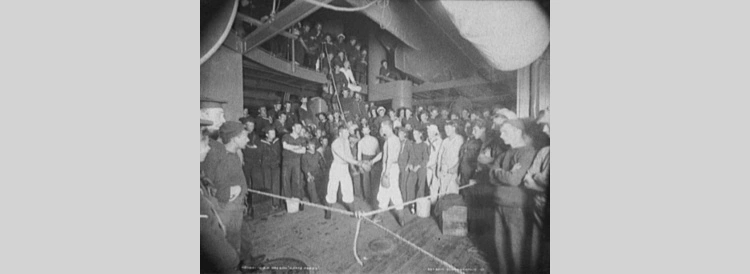
During World War II, the Special Services Branch was established to enhance and facilitate athletic training by the Navy and Army. Baseball, in particular, remained an extremely popular activity with soldiers, sailors and airmen. However, following 1945, although multiple military athletic training manuals were issued, a gradual reduction of the variety of activities included under the umbrella of the program occurred. In the 1940s and 50s the program included the standard individual physical training but primarily focused upon team sports such as baseball, basketball, boxing, and volleyball. By the late 1950s, the variety of activities had been reduced significantly.

Following withdrawal from Vietnam in 1973, the U.S. Army began a two-decade focus upon warfighting, including a significantly increased emphasis upon physical fitness. However, throughout this period, the U.S. military physical fitness doctrine was significantly revised. By 1985, all team and individual sports had been entirely removed from the formal program, and the military's emphasis had shifted entirely to personal physical fitness in support of the new individual physical fitness standards and tests.
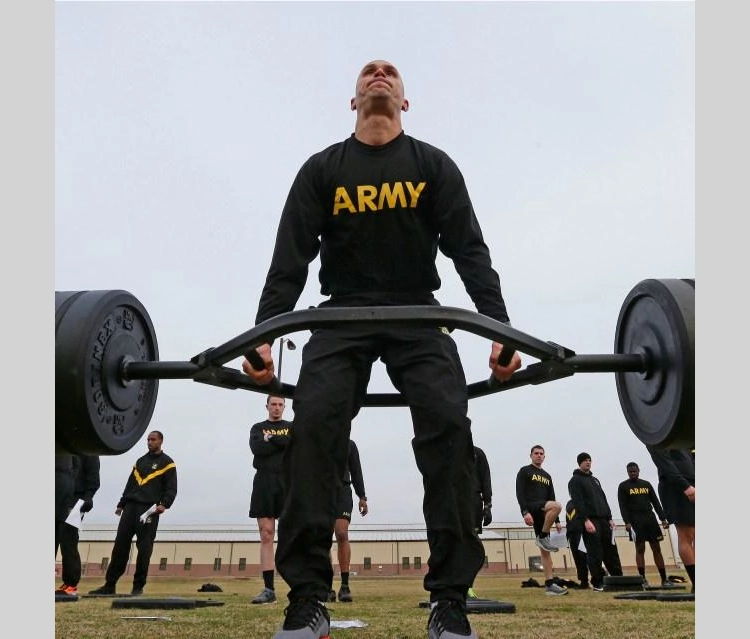
Military Replaces Decades-Old Fitness Test
This small but mighty exhibit, installed in November 2021, contains artifacts from World War I through modern days, including a signed Tommy Lasorda baseball from the Museum's Collections, a 1915 pair of straw-stuffed boxing gloves, and a loaned West Point rugby ball with a fascinating and heartbreaking saga behind it.
Please make sure to visit our new exhibit in the Patton Gallery during your next visit to the National Museum of Military Vehicles.
